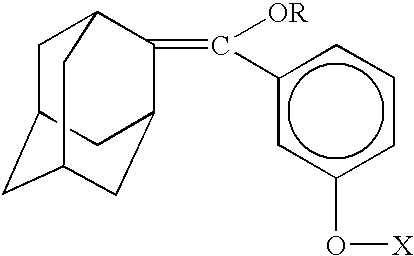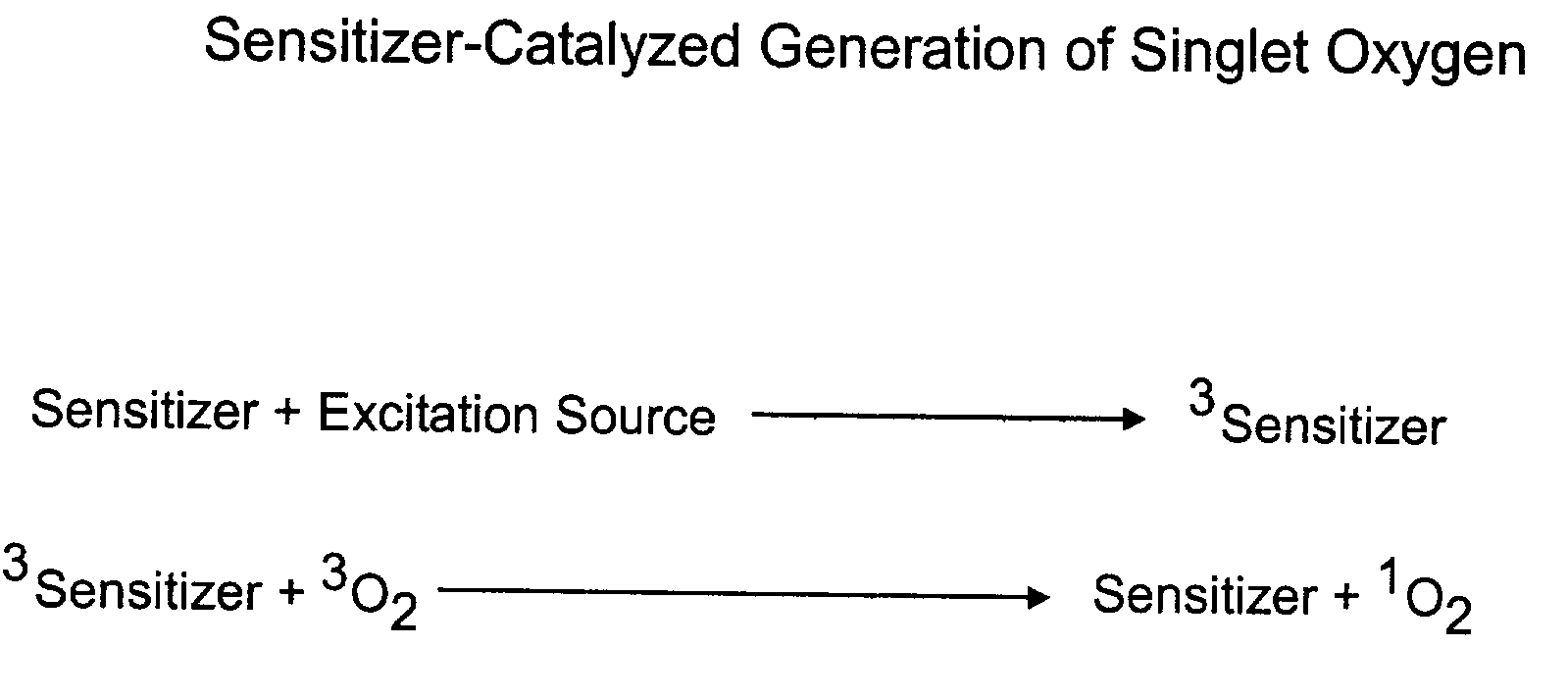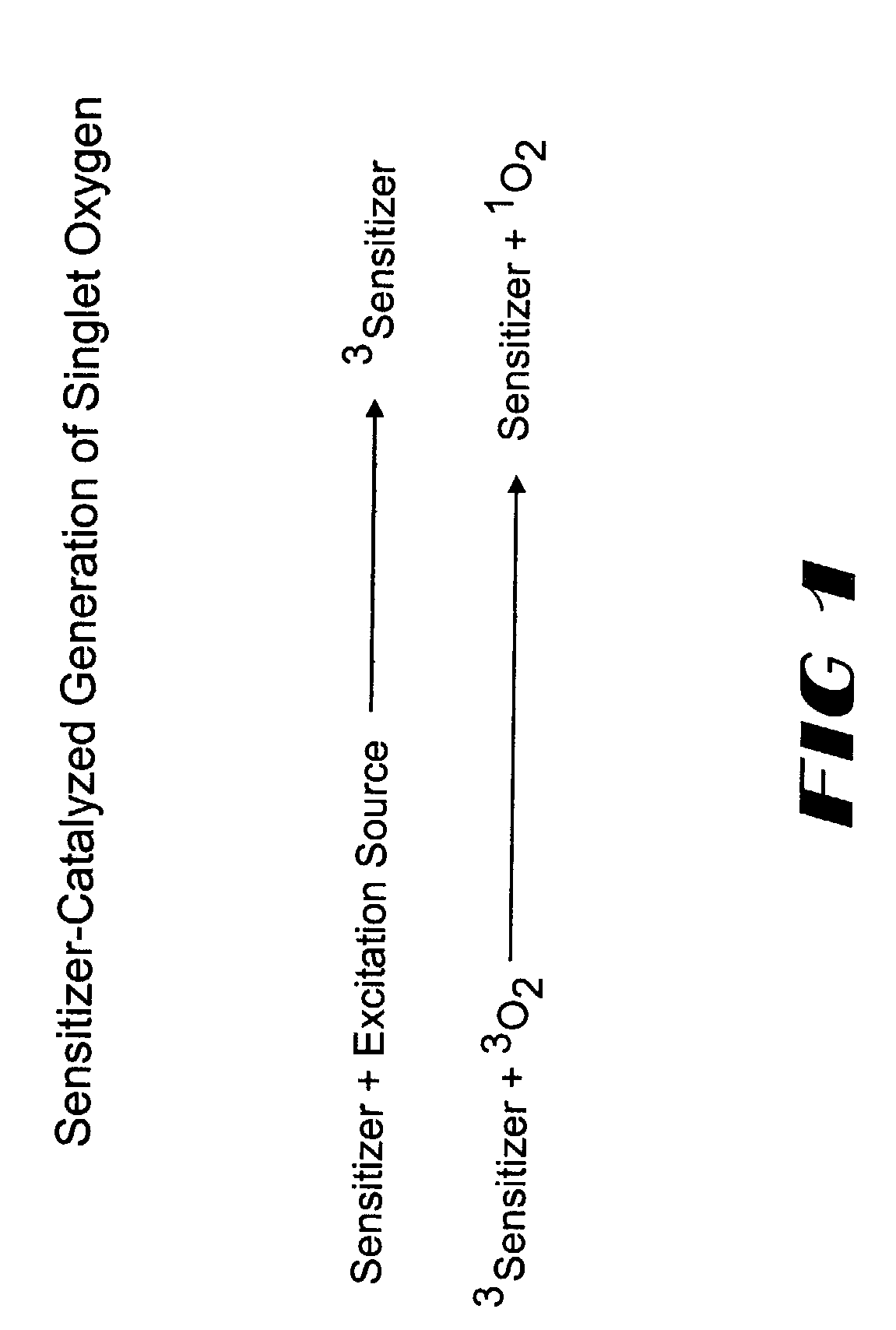Method for chemiluminescent detection
a chemiluminescent and detection method technology, applied in biochemistry apparatus, biochemistry apparatus and processes, photographic processes, etc., can solve the problems of increasing the number of reagents, requiring more time to complete the assay, and many steps
- Summary
- Abstract
- Description
- Claims
- Application Information
AI Technical Summary
Benefits of technology
Problems solved by technology
Method used
Image
Examples
example 2
Dot Blot Hybridization of Methylene Blue-Labeled Oligonucleotide to Target DNA
[0057] Following PCR amplification of the target DNA, said DNA was spotted on a Hybond+nylon membrane (Amersham Biosciences Corporation), along with negative controls of linearized pUC19 DNA at various concentrations ranging from 25 to 500fmoles in a total volume of 1 microliter. Spots were allowed to dry. The DNA was subsequently denatured and fixed as follows: 1 minute soak in 1.5 M NaCl; 0.5 M NaOH, followed by fixation by baking at 120.degree. C. for 40 minutes, followed by 5 minute soak in 1.5 M NaCl; 0.5 M Tris-Cl pH 7.5. Hybridization was as follows: The filter membrane was soaked in prehybridization buffer (0.25 M Na--PO.sub.4; pH 7.2; 7% (w / v) SDS for 45 minutes at 40.degree. C. in a total volume of 0.5 ml per cm.sup.2 / membrane. The labeled oligonucleotide probe was added directly to the prehybridization buffer at a final concentration of about 2 .mu.moles / ml and incubated for 16 h at 40.degree. C...
example 3
Preparation of the Inventive Film
[0058] Ten mg of an appropriate chemiluminescent olefin are dissolved in 100 ml (0.37 mM) of n-hexane or methanol. A Hybond-N neutral nylon membrane (Amersham Biosciences Corporation) was dipped in the olefin solution and allowed to air dry.
example 4
Formation of a Triggerable Chemiluminescent Compound on the Inventive Film
[0059] Hybridization was detected by first assembling the sandwich formation shown in FIG. 6A. In order to detect a signal, a membrane containing hybridized target DNA from Example 2 is placed (DNA side up) on a glass plate. The inventive membrane with chemiluminescent precursor immobilized therewith was subsequently placed on top of the membrane with the target molecule. A sheet of non-transparent, black paper is placed over the inventive film and another glass plate was placed on top of the whole sandwich formation. The sandwich formation was then exposed to red light for 15 minutes by using an appropriate cut-off filter and irradiating through the glass plate containing the hybridized target DNA. This allows for formation of a triggerable chemiluminescent precursor compound on the inventive film, which may be subsequently triggered as described in Example 5 below.
PUM
| Property | Measurement | Unit |
|---|---|---|
| wavelength | aaaaa | aaaaa |
| wavelength range | aaaaa | aaaaa |
| wavelength | aaaaa | aaaaa |
Abstract
Description
Claims
Application Information
 Login to View More
Login to View More - R&D
- Intellectual Property
- Life Sciences
- Materials
- Tech Scout
- Unparalleled Data Quality
- Higher Quality Content
- 60% Fewer Hallucinations
Browse by: Latest US Patents, China's latest patents, Technical Efficacy Thesaurus, Application Domain, Technology Topic, Popular Technical Reports.
© 2025 PatSnap. All rights reserved.Legal|Privacy policy|Modern Slavery Act Transparency Statement|Sitemap|About US| Contact US: help@patsnap.com



